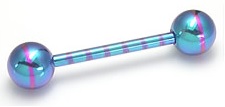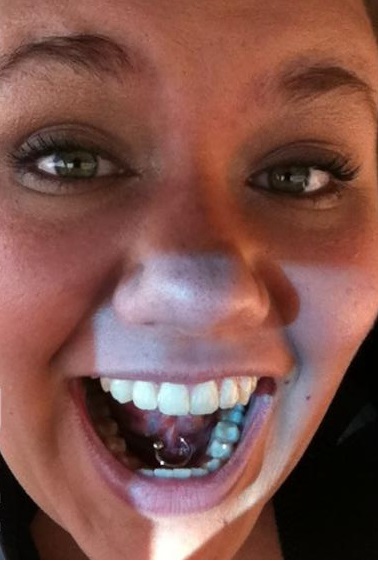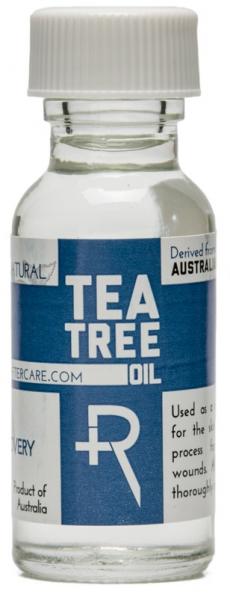 If you’re interested in learning about web piercings, our Web Piercing FAQs will give you a full education. We cover everything from what web piercings are to the different types of web piercings, what risks are associated with frenulum piercings to the types of jewelry that can be worn in them, and beyond.
If you’re interested in learning about web piercings, our Web Piercing FAQs will give you a full education. We cover everything from what web piercings are to the different types of web piercings, what risks are associated with frenulum piercings to the types of jewelry that can be worn in them, and beyond.
If you have a burning web piercing question you want answered, click on it in the list of links below to see the answer, or read through this entire web piercing Q&A to learn everything you could possibly want to know about frenulum piercings.
Web Piercing Questions
Q. What’s another name for a web piercing?
Q. What is a web piercing?
Q. How many types of web piercing are there?
Q. Are some web piercings more discreet than others?
Q. What types of jewelry can be worn in web piercings?
Q. Is there an ideal starting gauge for each web piercing?
Q. Do frenulum piercings have sexual benefits?
Q. Are there any tongue web piercing risks?
Q. Can an oral web piercing damage my teeth or gums?
Q. How intense is tongue web piercing pain?
Q. What’s the standard tongue web piercing healing time? How does it compare to other web piercings?
Q. What does proper web piercing aftercare entail?
Q. What problems can arise with a web piercing, and what should I do if I have trouble with my web piercing?
Q. Where can I learn more about web piercings?
Answers to Common Web Piercing Questions
Q. What’s another name for a web piercing?
A. A web piercing is also sometimes referred to as a frenum or frenulum piercing. Multiple web piercings could also be called frenula piercings, since frenula is the plural version of frenulum. The reason web piercings are also known as frenula piercings is explained in the following web piercing definition.
Q. What is a web piercing?
A. A web piercing is a piercing of the soft, membranous flap of connective tissue that joins two parts of the body. That connective tissue is called a frenulum (plural = frenula) or frenum. There’s a frenulum in between your gums and the inside of your upper lip, another between your gums and the inside of your lower lip, and a frenulum that connects the underside of your tongue to the floor of your mouth. The webs in between your fingers and toes are also considered frenula, as are certain folds around the clitoris and the underside of the penis. There are even frenula inside your body, like the frenulum of ileocecal valve that partially encircles the lumen of the colon.
Since a frenulum is typically a two-sided flap, it can be pierced straight through–at least with oral web piercings and foot and hand web piercings. Despite the fact that there are natural entry and exit points for most frenulum piercings, all web piercings act like surface piercings in the sense that they’re more prone to migration and rejection. A male frenum piercing is 100% a surface piercing, because there’s no natural entry and exit point like you find with oral frenulum piercings and hand and feet web piercings. The skin beneath the penile shaft has to be pinched up to create an entry and exit point on either side.
Q. How many types of web piercing are there?
A. There are a number of different types of web piercings (a.k.a. frenulum piercings), including:
- Tongue Web Piercings – When the flap of skin beneath your tongue is pierced, it’s called a tongue web piercing or a lingual frenum piercing.
- Smiley Piercings – This is a piercing of the upper lip frenulum and is also called an upper labial piercing.
- Frowney Piercings – When the flap of skin between your gums and lower lip is pierced, it’s called a frowney piercing or a lower labial piercing.

- Hand Web Piercings – These piercings are typically placed through the soft, fleshy area between the thumb and forefinger, but technically they could be done through any of the “webs” between your fingers. Take a look at the photo below, next to the Q&A about web piercing healing times, to see someone who has a web piercing in between each of his fingers.
- Foot Web Piercings – Foot frenulum piercings aren’t as common as other web piercings, but it is possible to have the webbing between your toes pierced.
- Frenum Piercings – Although “frenum” and “frenulum” can be used interchangeably, typically when someone mentions a frenum piercing, they’re referring to a male genital piercing that goes side-to-side through the underside of the penile shaft. A Jacob’s Ladder is a row of frenum piercings that lines the underside of the penis. If you’d like to see Jacob’s Ladder or frenum piercing photos, please visit our Photo Gallery. Note that you have to be 18 or older and logged in to view the frenum piercing and Jacob’s Ladder piercing photos our community members have shared. For more info, read our How to Use the Gallery article.
- Dorsal Frenum Piercings – This is a side-to-side piercing placed along the top of the penile shaft. Visit the Dorsal Frenum Piercings section of our Photo Gallery to see pictures of this variation of a standard frenum piercing.
Q. Are some web piercings more discreet than others?
A. Tongue web piercings and penile frenum piercings are the two most discreet types of web piercings, because no one will see them unless you decide to show them your piercings. Smiley and frowney piercings are also relatively discreet–at least until you smile. Wearing a bent barbell in a smiley or frowney piercing can make it less visible when you smile. Web piercings between the toes are relatively discreet, too–until you take off your socks and shoes or wear sandals, that is. Hand web piercings are the most visible of all the various types of web piercings.
If you need to minimize the appearance of any of your web piercings, consider using one of our piercing retainers. We have 18g-20g nose bones that could work as smiley or frowney piercing retainers, skin tone discs that you can screw into a labret stud to make a hand web piercing more discreet, and other clear piercing retainer options available.
Q. What types of jewelry can be worn in web piercings?
 A. Each type of web piercing requires a different type of jewelry, broken down as follows:
A. Each type of web piercing requires a different type of jewelry, broken down as follows:
Tongue Web Piercings, Smiley Piercings & Frowney Piercings – The two most common types of jewelry worn in all 3 oral web piercings are circular barbells and captive rings. Bent barbells are another suitable style of jewelry for oral web piercings.
Foot & Hand Web Piercings – Labret studs are the ideal type of jewelry for hand and foot web piercings, but short straight barbells or bent barbells can also be used. Some people like to wear circular barbells or captive rings in their hand web piercings, but it’s best to start with a labret stud or a straight barbell and change over to a hoop or circular barbell once your piercing is fully healed.
 Frenum & Dorsal Frenum Piercings – Straight barbells are the most common type of jewelry for both types of penile frenum piercings. If your frenum piercing is placed immediately below the head of the penis, you could wear a D-ring instead. A D-ring has a straight bar that goes through your frenum piercing attached to a ring that encompasses your penis.
Frenum & Dorsal Frenum Piercings – Straight barbells are the most common type of jewelry for both types of penile frenum piercings. If your frenum piercing is placed immediately below the head of the penis, you could wear a D-ring instead. A D-ring has a straight bar that goes through your frenum piercing attached to a ring that encompasses your penis.
Q. Is there an ideal starting gauge for each web piercing?
A. Lingual frenula and labial frenula are delicate pieces of tissue, so finer-gauge needles and jewelry are typically used for these web piercings. Your piercer may start you out anywhere in the 16g to 20g range, depending on the thickness of your frenulum. If the tissue can tolerate it, go with the heaviest gauge your piercer feels is appropriate for your frenulum, because (within reason) heavier-gauge jewelry is less prone to migrate out over time.
Hand web piercings and web piercings done between the toes can typically tolerate a slightly heavier-gauge needle and jewelry than oral web piercings can. Your piercer may use a 14g or even a 12g needle and jewelry for your foot or hand web piercing. Again, it’s best to go with the heaviest gauge the area will accommodate to minimize the risk of migration. It’s also important that your piercer place your piercing as far back from the edge of the frenulum as possible to avoid migration/rejection.
Q. Do frenulum piercings have sexual benefits?
 A. Unlike traditional tongue piercings, oral web piercings don’t provide much, if any, additional stimulation during kissing and oral sex. Penile frenum piercings provide no physical stimulation for men, but they can provide mental sexual stimulation. Additionally, they can be very pleasing for female partners during vaginal intercourse, once a woman gets comfortable with the idea of your penis being pierced. When introducing your partner to a frenum piercing, it may help to wear a condom initially. If you have multiple sexual partners, you should always wear a condom to protect yourself from sexually transmitted diseases. Even with a condom, you should not take your penile frenum piercing for a test drive in the bedroom until your piercing is fully healed. If you resume sexual activity too soon, you risk tearing the delicate skin around your piercing, ripping your frenum piercing out completely, and exposing yourself to bacteria that could lead to infection.
A. Unlike traditional tongue piercings, oral web piercings don’t provide much, if any, additional stimulation during kissing and oral sex. Penile frenum piercings provide no physical stimulation for men, but they can provide mental sexual stimulation. Additionally, they can be very pleasing for female partners during vaginal intercourse, once a woman gets comfortable with the idea of your penis being pierced. When introducing your partner to a frenum piercing, it may help to wear a condom initially. If you have multiple sexual partners, you should always wear a condom to protect yourself from sexually transmitted diseases. Even with a condom, you should not take your penile frenum piercing for a test drive in the bedroom until your piercing is fully healed. If you resume sexual activity too soon, you risk tearing the delicate skin around your piercing, ripping your frenum piercing out completely, and exposing yourself to bacteria that could lead to infection.
Q. Are there any tongue web piercing risks?
A. Tongue web piercings are one of the more delicate types of web piercings to perform. There are salivary glands under your lingual frenulum, called sublingual glands (“sub” = “beneath” and “lingual” = “tongue”). Your sublingual glands are responsible for producing roughly 5% of your saliva. A professional piercer can tactfully avoid injuring the sublingual glands, which is why you should only allow a professional to pierce your lingual frenulum.
Since there are very few blood vessels in the lingual frenulum, excessive bleeding is uncommon with this type of piercing. The only other problem that can arise with a tongue web piercing pertains to speech. Your extra-large starter jewelry–which will be bigger than you might like to accommodate any swelling that occurs without putting pressure on your piercing–may impede your speech at first. However, this issue can be overcome with practice and should become a non-issue once your piercing is healed and you can swap out your starter jewelry for something smaller.
Q. Can an oral web piercing damage my teeth or gums?
A. You’re teeth and gums are more at risk with smiley piercings and frowney piercings than they are with lingual frenum piercings, because they’re closer to your teeth and gums. If you wear metal jewelry, then you’re more at risk for chipping your teeth, and gum recession can become a concern if you keep your web piercing long-term. Soft, flexible PTFE jewelry is a good alternative to metal, if you’re worried about damaging your teeth.
All 3 oral web piercings can cause hypersalivation (an overabundance of saliva), because your body produces saliva to help break down any foreign object in your mouth, whether it be food or jewelry. Hypersalivation can actual help prevent tooth decay, because saliva helps wash away sugar and food particles that produce tooth-damaging acids. So in that sense, having a oral web piercing can actually be good for your overall oral health.
Q. How intense is tongue web piercing pain?
A. There are very few nerve endings in the lingual frenulum, so tongue web piercings aren’t excessively painful. With all web piercings, you should just feel a momentary pinch, followed by the pressure of your jewelry being inserted. The area may be tender for a week or more after being pierced, but any sharp pain you experience will be momentary, during the actual piercing.
Q. What’s the standard tongue web piercing healing time? How does it compare to other web piercings?
A. The mouth is one of the fastest-healing parts of the human body, so it’s no surprise that tongue web piercings can heal in as little as 2 weeks for some people. More typically, though, the tongue web piercing healing time ranges from 8-10 weeks. Smiley piercings and frowney piercings also typically take 8-10 weeks to heal. Hand web piercings can take up to 3 months or more to heal, since we use our hands for everything. The same is true of foot web piercings, because they’re constantly irritated by socks, shoes and movement.
If you experience any problems during the web piercing healing process, it can delay the healing time significantly. It’s important to practice good aftercare and to protect your piercing as much as possible to minimize problems during the healing process.
Q. What does proper web piercing aftercare entail?
A. There are different aftercare regimes for oral web piercings vs. hand and foot web piercings. However, there are some general aftercare rules that you should follow no matter what type of web piercing you have. For instance, don’t play with your jewelry, and avoid smoking during the web piercing healing process. Nicotine slows down the body’s ability to heal itself. This is particularly important for oral web piercings, because on top of the systemic effects of nicotine, inhaling smoke can dry out your mouth and further delay healing.
It’s also important to be hygienic in general, to eat well, and to get lots of sleep. A piercing is a wound, and the body needs all the help it can get when healing a wound. Good nutrition and sufficient rest will help your body heal your web piercing faster.
Here are some more specific tips for the two general classes of web piercings:
Oral Web Piercing Aftercare
When you have an oral web piercing, it’s important to rinse your mouth with a sea salt-based oral piercing aftercare rinse morning and night, and after you eat. You can either make a homemade sea salt solution using aquarium salt from a pet store and sterile water, or you can buy a product like Recovery or H2Ocean oral rinse. If you make your own solution, boil 1 cup of tap water for 5 minutes to sterilize it, stir in 1/4 teaspoon of sea salt, let the mixture cool, and then swish it gently around your mouth for 5 minutes at each application. (You can swish for a minute, spit, and repeat; just do it for a total of 5 minutes.) Repeat this process 3 to 5 times a day for optimal results. The procedure is the same whether you’re using homemade sea salt solution or a store-bought oral rinse. After the first few weeks, you can downgrade to just rinsing after you eat.
Do NOT use alcohol-based mouthwash to clean your tongue web piercing, smiley piercing or frowney piercing. Alcohol is drying, and it can delay the healing process.
Foot & Hand Web Piercing Aftercare
Proper foot and hand web piercing aftercare also involves using sea salt solution to keep your piercing clean. You can purchase a saline wash like Recovery Piercing Aftercare Spray, make a homemade sea salt solution using the recipe above, or both. 2 to 3 times a day, you should wash your hands with antibacterial soap or put on gloves, soak a cotton ball with sea salt solution, and press the moistened cotton ball gently against your piercing for 5 minutes. Repeat with a second cotton ball on the other side of your web piercing. If desired, you can incorporate tea tree oil into your cleanings to take advantage of its natural moisturizing and antiseptic properties. You should never apply tea tree oil directly to your skin, though. If you’re strictly using store-bought saline wash, saturate a cotton ball with it, then add 1 drop of tea tree oil to the part of the cotton ball that you’re about to hold against your piercing. If you’re using homemade sea salt solution, add 2-3 drops of tea tree oil per cup of sterile salt water. Store any unused homemade sea salt solution in an air-tight container for use during subsequent cleanings.
It’s okay if some sudsy water gets on your foot or hand web piercing when you shower, but you should never wash your piercing with soap directly while it’s healing. Soap is drying and can irritate your piercing. Sea salt solution is sufficient for keeping your piercing clean.
Note: It’s normal for any wound, including piercings, to produce lymph during the healing process. Lymph is a clear fluid that dries to a whitish crust around external piercings–i.e. the notorious “crusties” that are so common with piercings. (Lymph may look like little strings of white goo when it’s discharged from an oral piercing.) If crusties form around your web piercing, don’t twist, turn or slide your jewelry to loosen them. Simply saturate a cotton ball with saline wash and hold it against your piercing to soften the crusties (always with clean or gloved hands!). Then, gently wipe them away with a clean tissue or cotton swab.
Q. What problems can arise with a web piercing, and what should I do if I have trouble with my web piercing?
A. The most common issue that occurs with web piercings is migration. It’s a natural response for your body to want to push out any foreign object embedded in it, so when a piercing is placed too close to an exit point (e.g. the edge of whatever web you’re having pierced), your body may try to push the jewelry towards that point with the goal of rejecting the piercing completely. To avoid migration and rejection, you need to be pierced as far back from the edge of the web as possible. Also, being pierced with a heavier gauge needle and jewelry can help minimize the risk of migration and rejection.
Hypergranulation, or the notorious “red bump”, is another common problem that occurs with all types of piercings. If a tight, somewhat shiny red bump that appears almost fluid-filled forms around your web piercing, it probably means that your jewelry is too tight. This issue is most likely to occur with foot and hand web piercings that have either labret studs or straight barbells in them. You’re less likely to experience hypergranulation with a circular barbell or captive ring, because the jewelry won’t put pressure on your piercing the way a barbell might. If you experience this issue, get a longer barbell inserted until your piercing is fully healed, or switch to a hoop of some variety.
When hypergranulation occurs around an oral web piercing, it’s more likely a moisture issue or the result of a small food particle getting trapped in your fistula (piercing hole). The best thing you can do is increase the number of sea salt solution swishes you do each day for a couple weeks, and see if the issue resolves itself. If it doesn’t, you can try having a different style jewelry inserted. If the problem persists after that, you may have to give up on the piercing or learn to live with the bump.
Sometimes hypertrophic scars will form around web piercings. This issue is more common with foot and hand web piercings than with oral piercings. A hypertrophic scar is a small, flat-topped growth that forms immediately around the piercing site. They tend to be close to skin color, unlike keloids, which tend to take on a darker, more reddish color. (If you think you have a keloid, it’s more likely to be a hypergranulation issue unless keloids run in your family and/or you’ve developed one of these abnormally-shaped scars around another piercing. Everyone jumps to the conclusion that they have a keloid when a bump forms around their piercing, but keloids are really quite rare.) If you develop a hypertrophic scar, you can apply either jojoba oil or silicone gel scar therapy twice a day once your piercing is fully healed. Both methods have been found to be highly effective at minimizing scarring when used regularly over a long period of time, as discussed in our blog post Is Silicone Gel Effective for Treating Piercing Scars?
Infection is another problem that can occur with web piercings. If at any point you develop red streaks radiating from your piercing, your skin becomes hot to the touch, and/or your piercing starts oozing a thicker, yellowish, pus-like discharge, you should see your doctor immediately to see if you need an antibiotic. Your doctor may suggest removing your jewelry, but you don’t need to do that as long as you ramp up your aftercare regime while taking an antibiotic. If you do remove your jewelry, make sure you continue applying sea salt solution regularly until the fistula closes.
Q. Where can I learn more about web piercings?
A. You’ll find additional information about oral web piercings in our Tongue Piercing FAQs article. To learn more about penile frenum piercings, read The Basics of Male & Female Genital Piercings. We also discuss web piercings in general in our Extreme & Unusual Piercings blog post. 
If you’d like to see web piercing photos, check out the Web Piercings section of our Photo Gallery. If you’re interested in watching web piercing videos, check out the Piercings section of our YouTube channel, where we post new videos regularly.
You can also post your web piercing questions in our forum, where our knowledgeable moderators and experienced community members will be happy to share their web piercing experiences and tips with you.
References
- Painful Pleasures Piercing Information Library
- Free Medical Dictionary
- Consumer Guide to Dentistry
- Webpiercing.com



